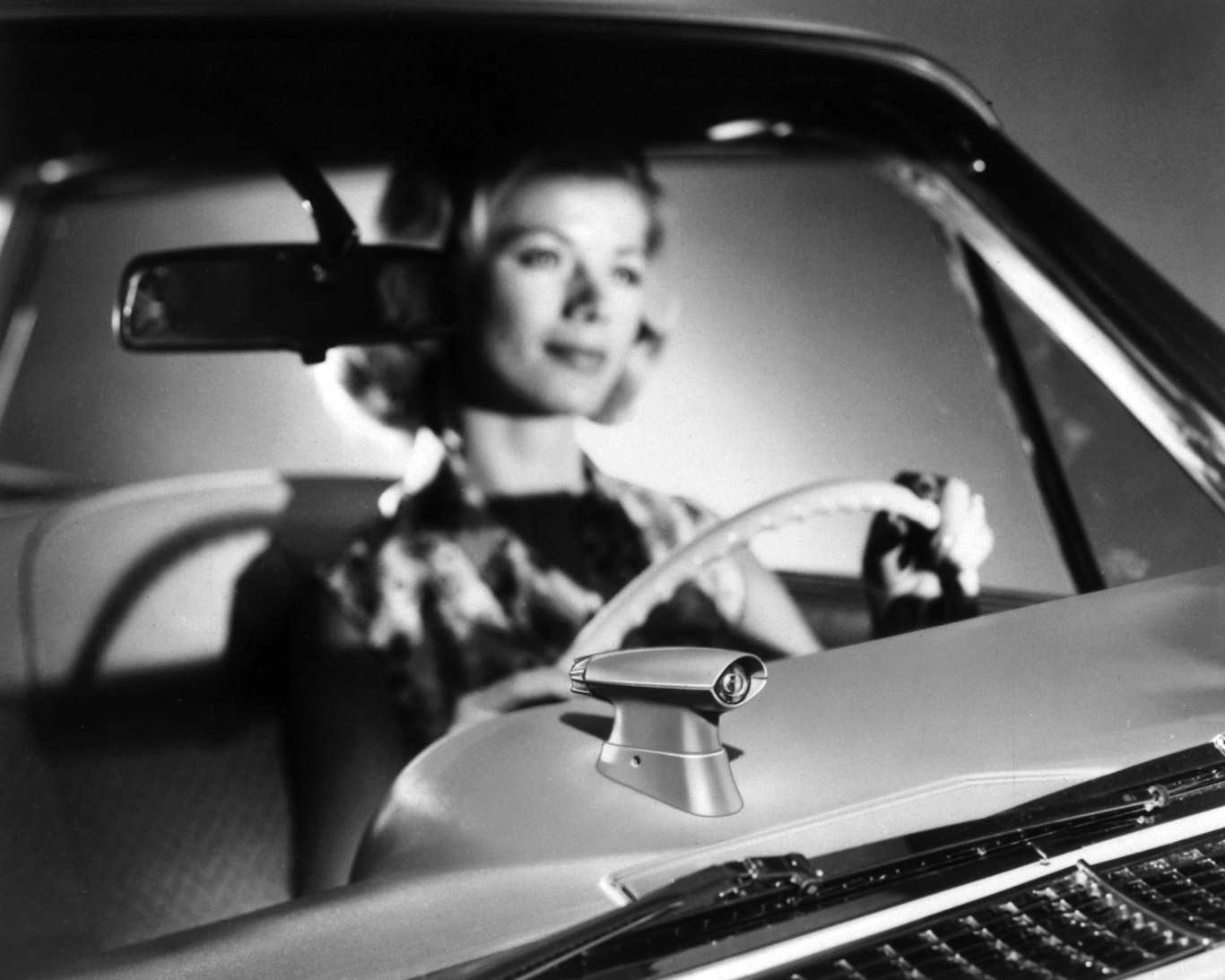Photonic technology of tomorrow for automatic driving today
Back when ‘computer’ meant a high school gymnasium-sized space filled with vacuum tubes, wires and clacking relays, automotive accessories and optional gadgetry were an analog electro-mechanical collection of cutting edge technology and modern design. Imagine a future with automotive technology so sophisticated that manually dimming the high beams for approaching automobiles was old-fashioned tedium of a time gone by. The divisional brain trust at the General Motors Guide Lamp Division delivered on this future in in the early 1950s with the Autronic Eye.
Introduced in 1952, the Autronic Eye was and used a light-sensing phototube to detect oncoming light and signal an amplifier to trigger the activation of low beams. The phototube was encased in a dash-mounted ray gun-like housing with its lens tirelessly peering out over the road. When oncoming lights tripped the photonic switch, a buzzing hive of vacuum tubes and capacitors in the amplifier known as the Autronic Brain took over and activated the low beams. The system automatically turned the high beams back on once the oncoming car passed. Automatically!
In 1958 the Autronic Eye was even further improved with adjustable sensitivity in case of rain, snow, big city lights or a big sky sunset. The futuristic dash-mounted Autronic Eye now featured a dial for on-the-fly adjustments. The unwavering politeness of the Autronic Eye was equipped with an floor-mount override switch in case of malfunction or if the oncoming driver needed a reminder to return the Autronic Eye’s automatic courtesy. The system made its way into Cadillacs, Buicks, Oldsmobiles and Pontiacs.
The same sort of vacuum tubes that make a Stratocaster sound the way it does through a Fender Twin Reverb amplifier worked to automatically drop the high beams until the approaching car passed. Technology delivered convenience and safety. Automatically! There were some problems with these early systems. Curves threw the line-of-sight Autronic Eye a curve ball and reflective highway signs could trigger the low beams and even cause the amplifier to go into a high-low flickering feedback loop.
After 1960 the system became the Guide-Matic, which boasted a smaller size universal-mount phototube, more compact electronics with miniaturized vacuum tubes and more precise adjustment control with improved sensitivity. As a further reminder to lessor-equipped drivers, the Guide-Matic featured an integrated Safety Salute, which winked the headlamps before dimming to low beams. The Guide-Matic eye hid above the headlights in the front fender of a 1964 Cadillac.
The General Motors Twilight Sentinel was a related convenience that used similar light sensing technology. The Twilight Sentinel automatically turned lights on or off according to exterior light conditions and could be set to keep exterior lights on for up to 90 seconds for an illuminated path from the car to the house. A dash mounted photoelectric eye sensed day or night and activated lights accordingly. Sensitivity and headlight deactivation delay could be adjusted with the touch of a dial.
Ford developed their own electronic headlight dimmer system which was available on 1955 Lincolns and Mercurys. Ford engineers later combined the features of their automatic headlight dimmer system with Twilight Sentinel-style on and off lighting functionality into a single and rare option unit known as the Autolamp. Chrysler was not left out of the automatic headlight dimming future and developed Automatic Beam Control for high-option, topline Chryslers and Imperials.
The separate componentry of automatic headlight dimming and automatic on and off lighting controls merged into a single all-knowing systems as time went on, eventually incorporating rain-sensing windshield wiper technology. While 1950s state of the art high-technology required vacuum tubes and buzzing relays, solid-state transistors brought the size and cost of these futuristic technologies down while improving functionality. Tech-jaded buyers of today expect automatic lighting as part of a features package in even the most mundane of automobiles. Automatically!


